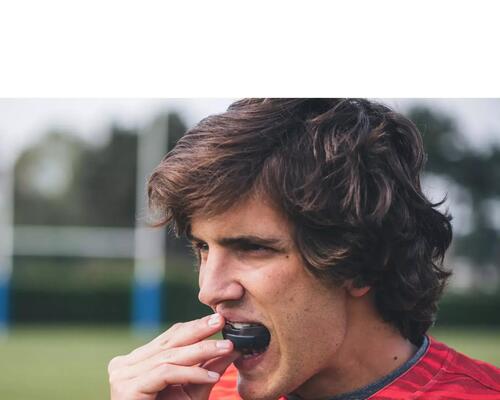1. The position of the head when tackling
To begin with, we are going to focus on protecting the head. It comes under particular strain during tackles. To protect against concussion, players need to learn to position themselves correctly. It is important to engage the shoulder on the opposing player's thighs and lower body while ensuring the head does not come into direct contact with the opponent. You should then wrap your arms around the player's legs, with your head positioned to one side of your opponent, in contact with them but not taking part in the impact itself.







